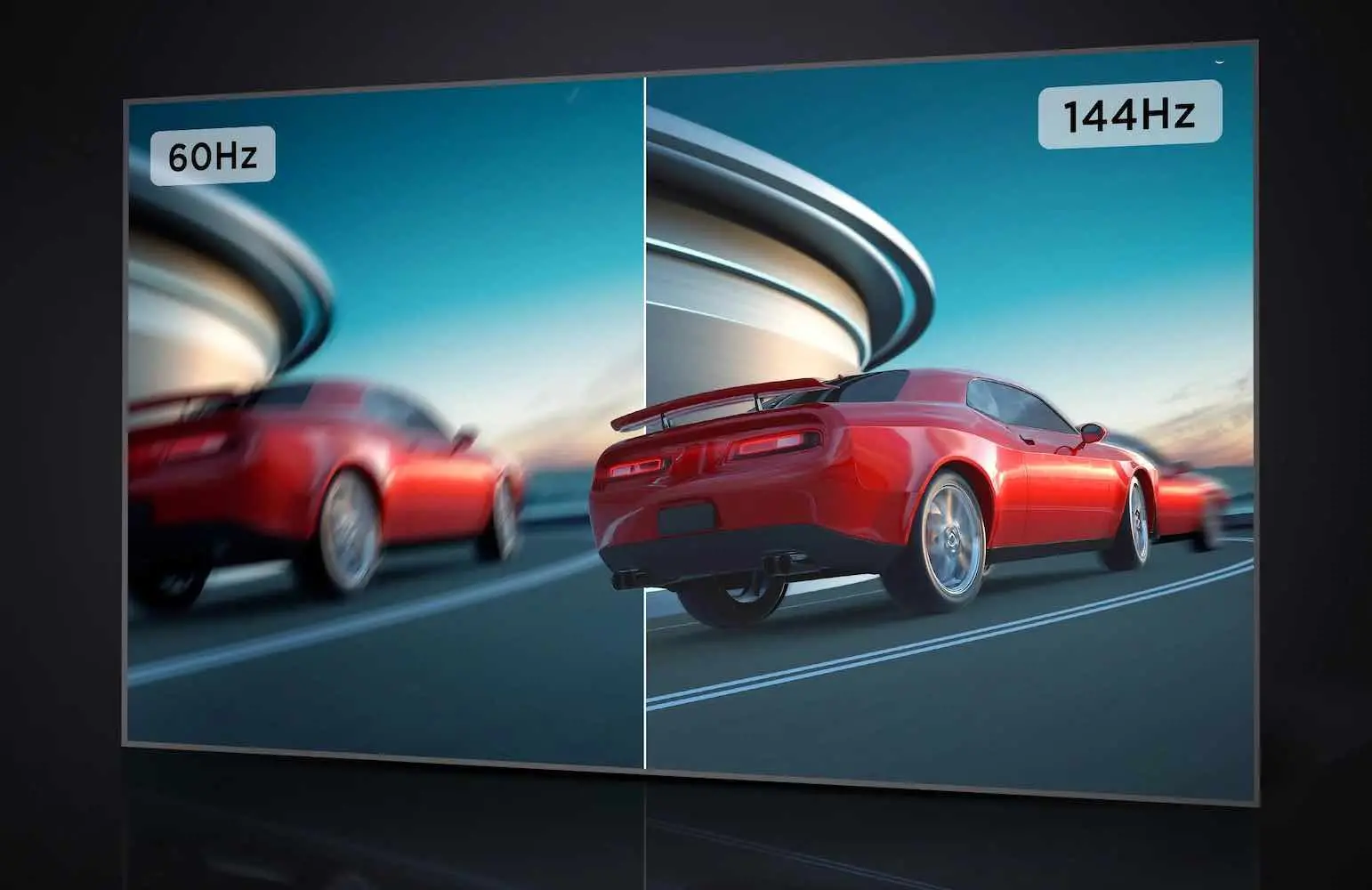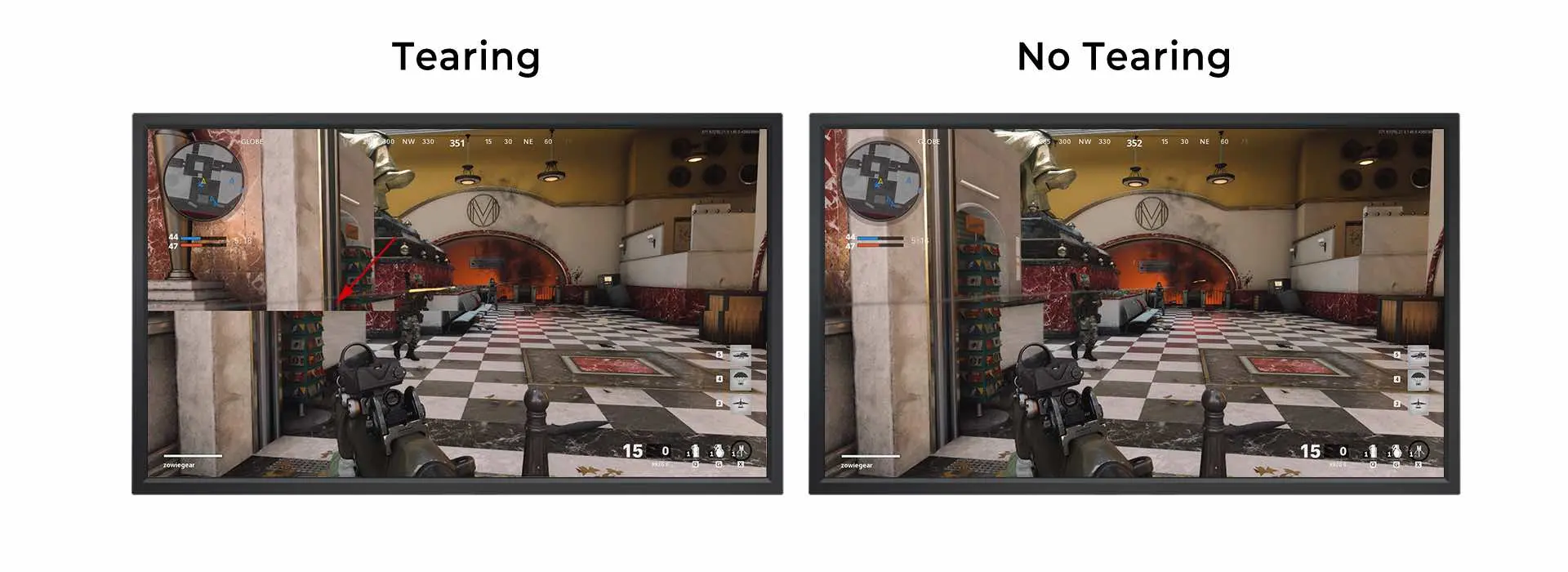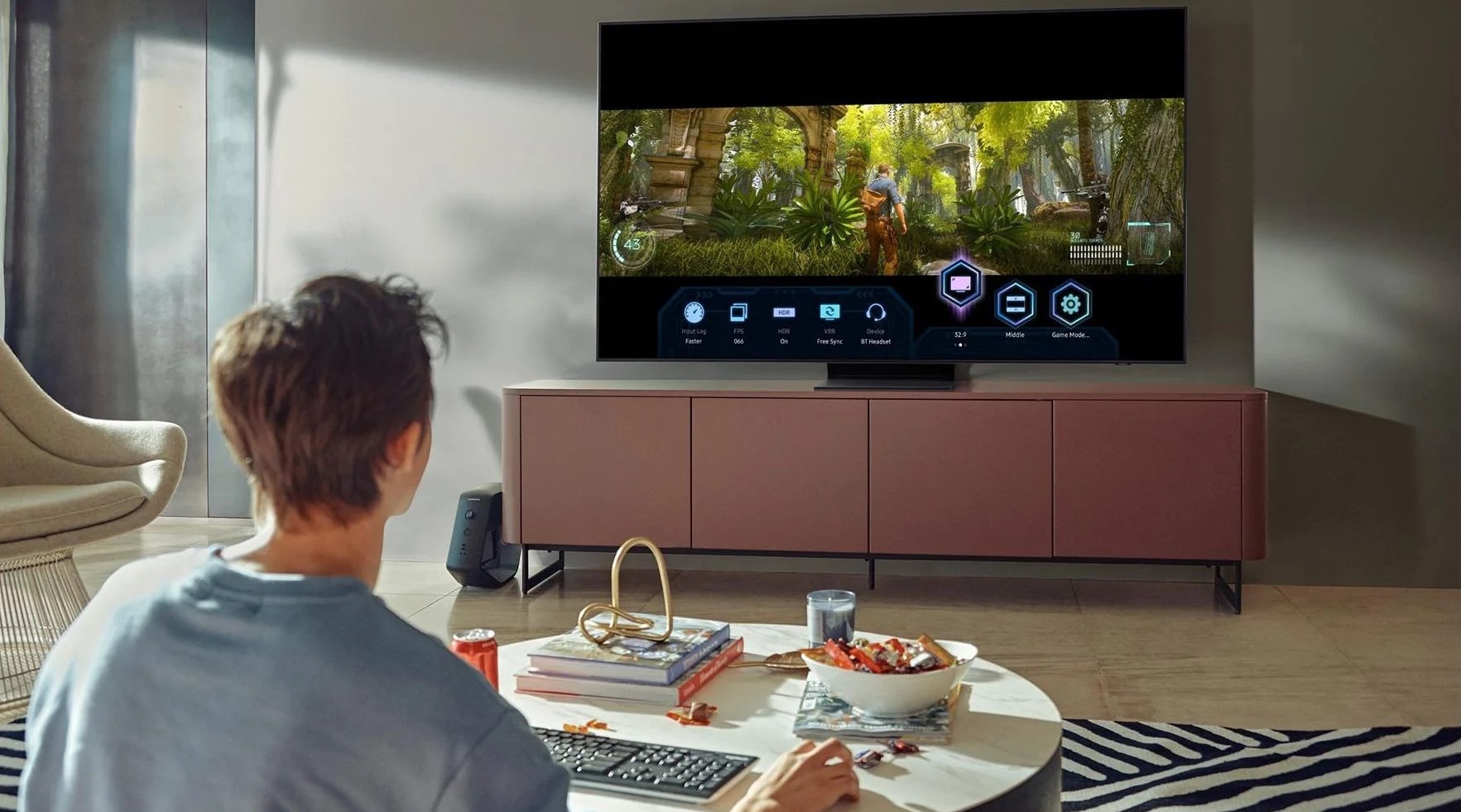
In case you’ve ever been confused about the terms Hz, refresh rate, or FPS when looking at TVs, you’re not alone. These terms are often used in descriptions or advertisements for displays, but they’re important to know about when you’re choosing the best TV for your home.
Hz can make a significant difference in video quality on TVs and monitors. Before going into the impact higher Hz can have on your viewing or gaming experience, we’ll need to start with what exactly it means.
What exactly is Hz and refresh rate?
Hz stands for the longer term Hertz, with Hz and refresh rate both being used to indicate how many pictures or “frames” are displayed per second (fps) on your TV or monitor. The best way to describe Hz is that it’s the refresh speed of your display, and the faster your TV or monitor can refresh, the smoother any on-screen movement will be.
A high refresh rate reduces any motion blur you may see and allows for a clearer picture during fast-paced action scenes. These days 60fps is standard for most displays, and that’s more than enough for TV and movies as well as standard gaming. While the standard is fine in most cases, there is a big advantage to choosing a device with an even higher refresh rate.
How Hz affects what you’re watching or playing

A higher refresh rate means everything you watch on your TV will look smoother. If you’re watching sports or an action movie, a TV with a higher refresh rate will reduce any motion blur you may see. Motion blur is when an object on the screen is moving too fast for the TV to keep up with it, so you’ll see a noticeable or only slightly noticeable blur as the action unfolds. Motion blur can be very obvious when you’re watching sports or you’re watching a movie with fast paced action on an older TV.
For gaming, the higher the frame rate the better applies to virtually every case. Game play on a TV with high refresh rate will be much smoother. Not only will a faster frame rate help you feel more immersed in the action, but the smoother motion can help reduce any motion sickness you may get from gaming as well.
Native refresh rate, stated refresh rate, and variable refresh rate
When shopping for a new TV you may see the terms “native refresh rate,” “variable refresh rate,”, and “stated refresh rate.” It’s helpful to know what these terms mean so you can choose the best TV for you.
Native refresh rate
Native refresh rate is the maximum refresh rate the TV can refresh your images without any help from added technology. If your TV says it has a native refresh rate of 60Hz, that’s the fastest it can refresh without using any type of motion technology.
Stated refresh rate
If the TV has a ‘stated’ refresh rate, the listed rate is one that is stated by the TV brand to be a certain speed. For example, you may see a TV with a stated refresh rate of 120Hz or 240Hz. This can mean the TV has a native refresh rate of 60 or 120Hz, but it may use motion smoothing technology or motion interpolation to speed up the refresh rate. Motion interpolation is a type of technology that reduces blur by adding additional frames between the original frames of the content.
Variable refresh rate
Variable refresh rate is an important term if you’re choosing a TV for gaming. Also referred to as VRR, variable refresh rate means the TV can adjust the refresh rate in real time based on the content it’s showing or the device it’s connected to. Consoles like the Playstation offer VRR, and it means your TV can sync with a console or graphics card so the TV’s refresh rate is always the same as the frame rate your console is putting out. Motion will be smoother because a TV with higher refresh rate can adjust to a game designed with a low frame rate, and that reduces lag, screen judder, and other issues like screen tearing.

Making the most of refresh rates
If you’re ready to upgrade to a new TV with a higher refresh rate, there are a few ways you can make the most of it.
Manually adjust your settings

For a smooth visual experience, it’s essential to apply the right settings so you always have a consistent frame rate. For gaming, a locked 60hz is better than higher ones that fluctuate between 60-90. That being said, this problem can also be negated with software like Nvidia’s G-sync. It’s available in all kinds of gaming monitors like the MSI Optix 27” which reduce the jarring effect of varying frame rates. Thanks to the evolution of monitors over the years you can pick up a curved, high Hz monitor like this without breaking your budget.

Monitors and TVs with higher refreshing rates always have different options you can lock it to for consistent use. The standard metrics for hz are 30, 60, 90, 120, and 144, with some modern TVs even going as high as 240Hz. There are a few TVs that can reach high refresh rates now, and Samsung’s new line of Neo QLED Smart TVs are a popular choice for anyone who watches a lot of action movies or sports.
Switch to game mode
One of the easiest ways to get better performance out of any TV is by switching to game mode. Game mode bypasses the post-processing image enhancement of modern TVs and will automatically switch to the best settings to reduce input lag, enhance HDR, and speed up refresh rate. While it comes at a cost of image quality, it can greatly enhance your maximum fps performance.

What refresh rate do you need?
It’s hard to go back to a low refresh rate TV after experiencing a higher refresh rate for the first time. I never understood the big deal around higher frame rates myself until I finally got hands-on experience with my own new TV. It makes watching TV feel more immersive, and it let me make the most of my gaming hardware. A high frame rate TV also gives me a competitive edge when gaming. It displays movement faster so I can have quick reaction time during fast-paced play.
If you’re looking for a TV with 120Hz or higher, you can find some excellent choices in the best gaming TVs of the year article. You can also look at the gaming TV buying guide for more on frame rate and all of the features you can find on the latest gaming TVs at Best Buy.




But movies are only 24fps
Comments are closed.